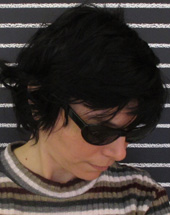
NOEL PALAZZO (ES)
Co-founder and co-director of Punto y Raya Festival (devoted to Abstract Art in Motion) since 2007.
Screenwriter and novelist. She has directed a couple of internationally awarded films and also lectures and writes essays as a film critic.
Since 2008 she’s been a member of the iotaCenter’s Advisory Council (Los Angeles, CA) and coordinator of the Spanish speaking community at the Visual Music Village.
She acts as a juror for international film & animation festivals, and has curated special programmes focused on avantgarde animation.
Topic of the presentation: Holy Blazes! What we see when we’re blinded.
When we experience intense pain, brain anoxia, altered states of consciousness or severe eye maladies, our brains -hungry for information- fabricate hallucinations. These are shared all over the world, and follow very simple patterns: points, grids, spirals and other line shapes made of pure Light over abstract backgrounds (or its negative image). These experiences, collected over millennia -thanks to recent reinterpretations of the cave paintings- has helped scientists to further understand the physiological structure of the Human Mind; that is, the architecture of our Brains beyond Language.
In this talk, Palazzo will explore one of her favourite subjects: the inane power of Abstract Imagery and its artistic expression.
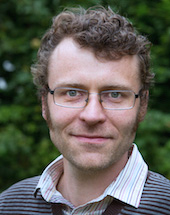
BARNABY DICKER (UK)
Barnaby Dicker is a lecturer, researcher, artist-filmmaker and curator. His research revolves around conceptual and material innovations in and through graphic technologies and arts, including cinematography and photography, with particular emphasis on avant-guard practices. This has led to work on topics such as animation, proto-cinematography, experimental film, graphic reproduction technologies, comic strips and paleoart. He is the editor of a special issue of Art in Translation (8:1, March 2016) on ‚cinematographic art’ and a member of the UK Arts and Humanities Research Council funded ‘Film and the Other Arts: Intermediality, Medium Specificity, Creativity’ International Research Network. He is a visiting lecturer in Critical and Historical Studies at the Royal College of Art, London, and at the University of South Wales, Cardiff. https://rca.academia.edu/BarnabyDicker
Topic of the presentation: Paul Sharits, Johannes Vermeer, and the Five Dhyani Buddhas
Paul Sharits openly acknowledged that his seminal flicker film N:O:T:H:I:N:G (1968) was influenced by Johannes Vermeer’s painting Young Woman at the Virginals (1670-72) in addition and in relation to the symbolism and conceptual structures associated with the Five Dhyani Buddhas. One of the central points of overlap for Sharits was how they deal with notions of light. This presentation looks at the implications of these points of reference in understanding Sharits’s flicker film in the context of avant-garde intervention. The purpose is not to retrace artistic intent, but, as Sharits put it, ‘to travel along the networks’ he set out for others to follow.
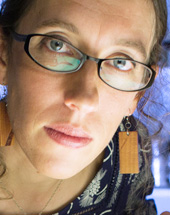
CORRIE FRANCIS PARKS (US)
Corrie Francis Parks animates sand, paint and other unusual materials. Animating with one hand under the camera and the other on the computer keyboard, her films maintain an organic connection to natural materials and traditional production methods while fully integrating digital technology. She teaches and researches animation at the University of Maryland, Baltimore County and her award-winning animated shorts have screened at Annecy, Hiroshima, Zagreb and Ottawa as well as other major festivals on every continent except Antarctica. She looks forward to the day when she can count penguins among her biggest fans.
Topic of the presentation: Light Through Sand
Backlit animation capitalizes on the purity of light pouring directly into the camera and no technique maximizes the nuances of that light better than sand animation. This presentation will discuss the historical variations on sand animation, the physical properties of the material that result in typical movement patterns, and the contemporary evolution of the technique that break from the historical trends, due to the adoption of digital capture and compositing. The talk will include a live demonstration of the process of stopmotion sand animation.
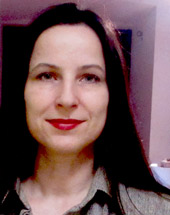
RENATE QUEHENBERGER (AT)
works as art researcher, film director, curator and art reviewer. Currently she is editing the homonymous book about her art research project ‘Quantum Cinema – a digital vision’ (mentored by Peter Weibel, funded by FWF).
Besides pursuing her thesis in philosophy ‘On the Hermeneutics of the Penrose Pattern’ she is promoting her mathematical finding, the 3D representation of the Penrose Kites and Darts Tilings (named epitahedron), a unit-cell of the 5-dimensional space in the context of arts and sciences.
Her contributions comprise talks, workshops and publications in the fields of quantum physics, social sciences and geometry as well as exhibitions and screenings.
Topic of the presentation: Geometries underlying cinema and light
Light as the essential medium for cinema can be traced back to Plato’s cave. A short history of the underlying geometry for the projection of images shall be given: from the invention of perspective in the Renaissance via developments of Projective Geometry by Gérard Désargues (1593–1662), Gaspard Monge (1746–1818) and Jean-Victor Poncelet, the founders of modern geometry, who are also the fathers of what André M. Ampére’s (1775–1836), suggested to create in 1834, and named “cinématique”.
Finally some 3D animated geometry examples of light as electro-magnetic turbulence of 5-dimensional space (Quantum Cinema) shall be „projected“.
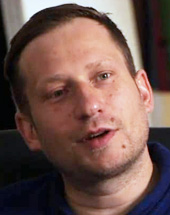
SEBASTIAN BUERKNER (D)
lives and works in London. He completed an MA at Chelsea College of Art & Design in 2002 and was awarded their Fellowship Residency in 2003. From 2004, his art practice has shifted primarily to animation.
Recent solo shows include Kunsthaus im KunstkulturQuartier Nuremberg, Germany; Tramway, Glasgow; Sketch, London; The Showroom Gallery, London; Whitechapel Project Space; London and LUX at Lounge Gallery, London; Art on the Underground, Screen at Canary Wharf, London. He has also participated in group shows and screenings at Tate Britain, Tate Modern, London; Tate Liverpool; Barbican, Whitechapel Gallery and South London Gallery, London. His film Purple Grey (2006) was broadcast as part of AnimateTV on Channel 4. His recent film The Chimera of M. won the Tiger Award for at the International Film Festival Rotterdam, and was also was shortlisted for the European Film Awards.
Topic of the presentation: „Breaking the Mould“
Regarding Stereoscopy, the talk will focus, if animation has an advantage over camera shot film by breaking the rigidity of spatial properties and therefore generating an spatial explorative and emotive experience.
So soon after the most recent ‘3D revolution’ – an apparent dwindling enthusiasm for stereoscopic film asks for a fresh look at its opportunities, limitations and strategies.
Alongside examples of experimental or unusual 3D works, the talk will explore the impact of stereoscopic vision on strategies of narration, augmentation, empathy generation and cognitive behaviour in general.
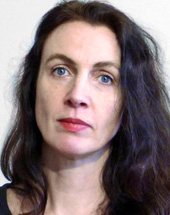
MARTINA TRITTHART (AT)
Studied architecture at the Technischen Universität Graz. Currently finishing her PhD on „Light Spaces – Spatial Models of Perception“. She was university assistant at the “Institut für Raumgestaltung” at the TU Graz and in the program “raum & designstrategien” at the Kunstuniversität Linz and is currently a lecturer at the Fachhochschule Joanneum and the Fachhochschule Burgenland, where she teaches lighting and media design. At the faculty of architecture of the Technischen Universität Graz she conducts workshops, featuring light and spatial perception. She works as an artist and curator at the interface of architecture, visual arts.
Topic of the presentation: Media Facades – Light, Art and Architecture.
During the past 20 years a considerable progress occurred in the variety of media facades. New technologies in media engineering and architecture have developed new facade elements, which have an important influence on the content of the represented animations. Media facades became increasingly relevant as interactive and aesthetic urban tools. The talk will overview current trends and different technologies against the background of historic developments. The emphasis will be placed on the work of artists who use light as a medium.
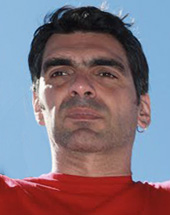
PEDRO SERRAZINA (PT)
Pedro Serrazina is an animation director and lecturer. He is currently undertaking a practice-based PhD at Univ. Lusofona de Lisboa on “The Creation and Use of Animated Space in Animation”.
As a practitioner he is currently finishing a site-specific sand animation installation for the Museum of Jewish Culture in the North of Portugal (due to open in September 2015), and has a short animation film, “The Memory House”, in pre-production.
Topic of the presentation: Animated space – a cinematic narrative tool.
Using Into the Light as a metaphor for my work trajectory, this presentation will look back into my animation practice, from its roots in architecture to a recent installation piece that plays with issues of space and light.
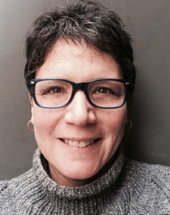
MADI PILLER (CA)
Madi Piller is a filmmaker, animator, programmer and independent curator currently living and working in Toronto, Canada. Her abstract, non-representational images are drawn from film explorations in Super8, 16mm and 35mm, as well as photography and video. The resulting imagery is strongly influenced by diverse animation techniques and styles.
Madi’s films have been screened at film festivals, alternative spaces and contemporary art venues nationally and internationally including the Festival du Collectif Cinema Jeune, Paris, France; Bienal de La Imagen en Movimiento, Buenos Aires, Argentina; Melbourne Animation Festival, Melbourne, Australia and ASIFAKEIL, Vienna, Austria. Her work has been produced with the support of the Canada Council for the Arts, Ontario Arts Council, and the Toronto Arts Council. International residencies include Museum Quartier 21, Vienna, Austria, 2015; The Klondike Institute of Art and Culture, Yukon, NWT, 2014 and the Independent Imaging Retreat, Mount Forest, Ontario, 2014. Madi Piller’s admiration for the art of animation has inspired her to serve as past volunteer President of the Toronto Animated Image Society (TAIS) Board of Directors, Toronto. Curatorial projects include: Gil Alkabetz: Decoding Narrative, Eleven in Motion: Abstract Expressions in Animation, Hello Amiga and OP ART Re-Imaged: Imaginable Spaces.
Topic of the presentation: Into the Light – The Film Resistance
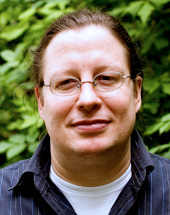
JENS MEINRENKEN (D)
Jens Meinrenken is an art historian, lecturer and curator. He studied art history, philosophy and German language as well as literature in Bamberg/Germany and Berlin/Germany. He is currently working on a dissertation project entitled Dynamic Sequences. On the relationship between comic, storyboard and film. He is co-founder of Deutscher Comicverein and has published numerous articles on a wide range of subjects including animated movies, computer games, and comics. His work as a curator includes for example Heroes, Freaks, and Super-Rabbis. Jewish Dimension of Comic Art, Jewish Museum Berlin (2010) and Comics from Berlin. Pictures of a City, Haus der Berliner Festspiele (2013).
Topic of the presentation: Black and White. Light and Color. A visual journey
Light is not only essential for our visual perception, it shapes the art world in a very particular way. Nothing seems more powerful, complex and pregnant with meaning than to play with light in all conceivable types of media – from classical painting to modern film and animation. Above all, light imbues static artistic objects with life and movement, it transforms them into animated images. The historical part of my presentation focuses on the philosophical traditions of the animated image and the rhetoric of light, darkness and color. The visual part presents a deeper understanding of light as a means to cross the dividing line between visual arts and popular media. Seen from this perspective, light plays key role for artistic expression in general, which raises the question: isn’t all art a journey into the light?
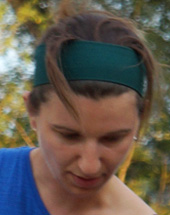
ANNA VASOF (GR)
Anna Vasof is an architect and media artist. Born in 1985, she studied architecture at the University of Thessaly (2010) in Greece and Transmedia Art (2014) at the University of Applied Arts in Vienna. Since 2004 her videos and short movies have been presented in several festivals, some of them winning distinctions. She’s currently working on designing and building innovative mechanisms for producing critical and narrative videos, actions and installations. Anna Vasof is the director of the XWRA VIDEO & MEDIA ART FESTIVAL
Topic of the presentation: XWRA VIDEO & MEDIA ART FESTIVAL.
Greece – Iti mountain – Summer 2015: Artland Xwra organized the first artistic meeting of contemporary video art titled «XWRA VIDEO & MEDIA ART FESTIVAL» with the participation of 80 artists from all over the world! Easy access to technological means opens doors to new forms of artistic expression. Inexpensive video and photo cameras, computers, and other electronic equipment become easily accessible tools for artistic production. These are often combined with classical media such as painting, sculpture, dance etc. opening new fields of criticism and creation.
On all four days of the XWRA festival more than 80 videos and experimental movies were projected on several installations. Every evening there was a special program with screenings, live performances, tributes, and a participatory animation production.
The Festival offered a camping posibility for participants and visitors, experimental cuisine, musical evenings, presentations, discussions, games and excursions.
http://xwra.gr/event/xwra-video-and-media-art-festival/
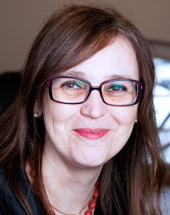
WALTRAUD GRAUSGRUBER (A)
Waltraud Grausgruber is one of the festival directresses of the Tricky Women Festival which takes place every year in Vienna around the date of the International Women’s Day. Tricky Women focuses on animated films made by women and therefore fills a unique position within the international festival landscape. Besides the competition the festival shows themed programs and retrospectives to present an exciting overview of the animated cinematic art of female artists from around the world and Austrian filmmakers as well. Historical curiosities and contemporary productions are part of Tricky Women’s programming.
Participant in Panel Discussion
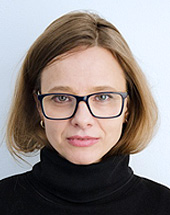
EWA STERN (CA)
Ewa Stern is a documentary filmmaker focusing on contemporary art practice. Her video documentaries were presented in various contemporary art museums and festivals. Stern was one of the founders of CastYourArt, Vienna based video production company specialising in art related themes. In recent years she has been taking part in organising contemporary art exhibitions, presentations and a film festival.

